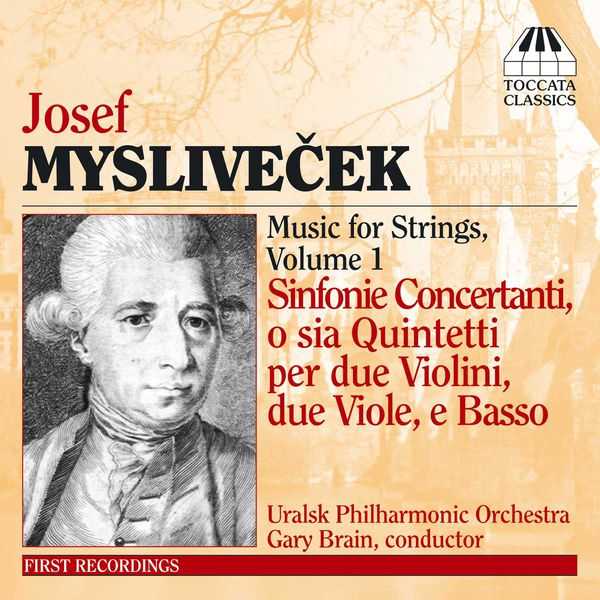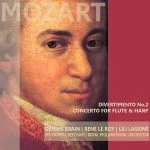
Composer: Josef Mysliveček
Orchestra: Uralsk Philharmonic Orchestra
Conductor: Gary Brain
Format: FLAC (tracks)
Label: Toccata
Catalogue: TOCC0023
Release: 2006
Size: 295 MB
Recovery: +3%
Scan: cover
Sinfonie Concertante in C Major, Op. 2, No. 6
01. I. Larghetto
02. II. Allegro
03. III. Presto
Sinfonie Concertante in B-Flat Major, Op. 2, No. 1
04. I. Allegro
05. II. Andante
06. III. Menuetto
Sinfonie Concertante in E Major, Op. 2, No. 2
07. I. Allegro
08. II. Andante
09. III. Presto
Sinfonie Concertante in D Major, Op. 2, No. 5
10. I. Allegro
11. II. Andante
12. III. Allegro
Sinfonie Concertante in G Major, Op. 2, No. 3
13. I. Allegro assai
14. II. Andante
15. III. Presto
Sinfonie Concertante in A Major, Op. 2, No. 4
16. I. Allegro
17. II. Andante
18. III. Presto
Josef Mysliveček (1737-81) – born in Prague, based in Italy – was one of the chief architects of the ‘high’ Classical style that emerged in Europe around 1770, and one of the most important musical influences on the young Mozart. The works on this CD, composed in the mid-1760s, were published to be performed as string symphonies, as here, or as quintets for two violins, two violas and cello, the earliest such works ever to appear in print. Their grace, passion and tenderness help explain why Mozart so admired Mysliveček’s operas and instrumental music.
In spite of the fact that the young Mozart apparently liked the music of Josef Myslivecek and went out of his way to hear it, recordings of works by this Bohemian-born composer have always been hard to come by. The music on this album consists of a group of works for strings in five parts (they are not “sinfonie concertanti” in the group-concerto sense in which the term was usually used), and the configuration — two violins, two violas, and cello — might have influenced Mozart as well; the best-known quintets of the era, those of Boccherini, used two cellos instead. None of which is to say that any of it is on Mozart’s level; these six symphonies or quintets are pleasant if rather formless three-movement concoctions that work well as background or commute music but hardly offer a tune to remember after the disc is done. These pieces were offered for sale as performable either by an orchestra or by a quintet, and in this case appear to be equally successful either way — which is to say not terribly. The original ordering of six pieces is rearranged in order to give the set an attractive, slow introduction; the Op. 2, No. 6 piece is the only one to deviate from the conventional fast-slow-fast format. Recordings from various parts of the former Soviet bloc are commonplace low-cost choices for labels and conductors who wish to open up unusual repertory, and this process has indeed exposed some wonderful ensembles. The Uralsk Philharmonic Orchestra from Kazakhstan, however, is not among them, with string sound that varies from harsh to over-lush, and the sound, direct from Uralsk, is boxy indeed. The booklet notes offer plenty of information about Myslivecek, and libraries may be more logical buyers of this disc than ordinary listeners.



